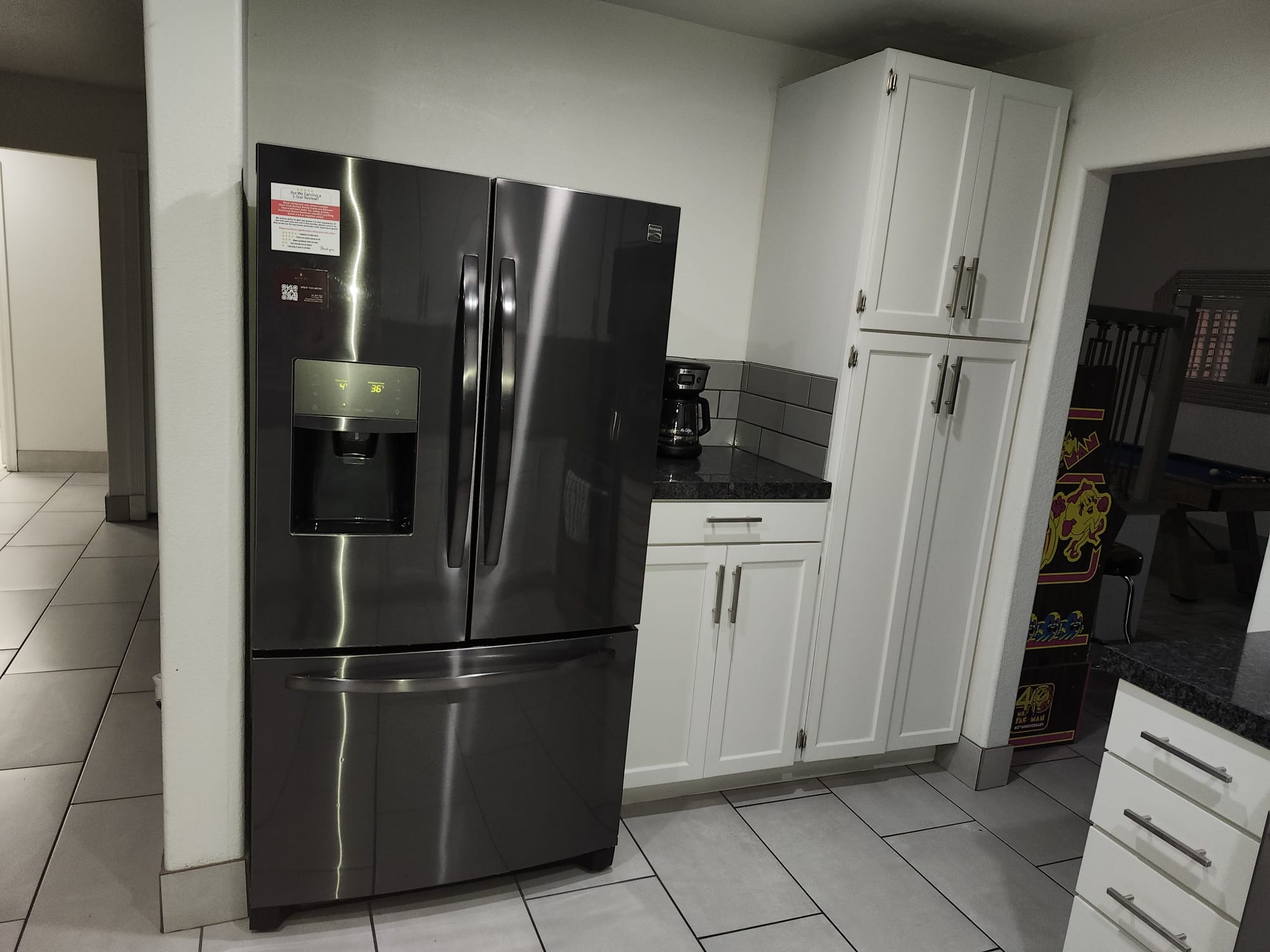Call us: (702)8638681
Complete Guide to Refrigerator Sanitization
A clean and organized refrigerator is not only essential to preserve the freshness and safety of food, but also contributes to the efficiency of the appliance. In this guide, you will learn step by step how to perform a deep cleaning and sanitization of your refrigerator, what products to use, how to keep it clean for longer, and tips for optimal organization.
#### **1. Importance of Refrigerator Sanitization**
The refrigerator is one of the most important appliances in the home, as it keeps food fresh and safe for consumption. Without proper cleaning, it can become a hotbed of bacteria, mold, and bad odors that could affect the health of your family.
– **Avoid cross contamination:** Keeping a clean refrigerator reduces the risk of bacteria such as Salmonella or E. coli contaminating your food.
– **Extend the shelf life of food:** A clean and well-organized space facilitates the circulation of cold air, which helps preserve food for longer.
– **Prevent bad odors:** Regular cleaning eliminates food remains and spills that can generate unpleasant odors.
**2. Necessary Materials and Products**
Before you begin, gather the following materials:
– **Microfiber sponges or cloths:** To clean delicate surfaces without scratching them.
– **Warm water with neutral soap:** Ideal for removing grease and surface dirt.
– **White vinegar:** A natural disinfectant that eliminates bacteria and bad odors.
– **Baking soda:** Excellent for removing difficult stains and neutralizing odors.
– **Old toothbrush:** To clean hard-to-reach corners and grooves.
– **Disinfectant spray:** Make sure it is suitable for surfaces in contact with food.
– **Rubber gloves:** To protect your hands from cleaning products or cold water.
**3. Preparation Before Cleaning**
1. **Empty the refrigerator:**
– Remove all food, containers and bottles.
Separate perishable products and place them in a cooler with ice packs to maintain their temperature.
2. **Turn off the refrigerator:**
– Unplug the appliance to save energy and prevent electrical accidents.
3. **Remove removable parts:**
– Remove shelves, drawers and compartments. This will facilitate a deeper cleaning.
#### **4. Deep Cleaning Step by Step**
**Step 1: Clean the inside of the refrigerator**
1. Mix warm water with neutral soap in a bucket.
2. Use a microfiber cloth or sponge to clean walls, doors and rubber seals.
3. For tough stains, apply a paste of baking soda and water directly to the stain. Let it sit for 5-10 minutes before gently scrubbing.
4. Clean the nooks and crannies with an old toothbrush to remove any built-up residue.
**Step 2: Sanitize removable parts**
1. Wash shelves and drawers with warm, soapy water.
2. If there are stubborn stains, soak the parts in a mixture of white vinegar and water for 15-20 minutes.
3. Rinse and dry thoroughly before replacing.
**Step 3: Sanitize the interior**
1. Fill a spray bottle with equal parts white vinegar and water.
2. Spray all interior surfaces and let sit for 10 minutes.
3. Wipe with a clean, dry cloth to remove any residue.
**Step 4: Clean the exterior**
1. Clean the outside of the refrigerator, including the handles and digital display (if equipped).
2. Use a damp cloth with mild soap to remove smudges and fingerprints.
3. If it’s stainless steel, use a cleaner specifically for this material to avoid scratches.
**5. Organization and Maintenance**
##### **Reorganizing food:**
1. **Categorization:** Place food by type (dairy, meat, fruit, etc.) for easy access.
2. **Transparent containers:** Use airtight containers to avoid spills and keep food fresh longer.
3. **Specific zones:**
– Top: Ready-to-eat meals.
– Center: Dairy, eggs, and frequently used products.
– Bottom drawers: Fruits and vegetables.
– Door bins: Condiments, drinks, and long-life items.
**Maintenance tips:**
– Clean up spills immediately to avoid stains.
– Check food weekly to discard expired items.
– Place a small container of baking soda in the refrigerator to absorb odors.
6. Frequency of Sanitization
Quick cleaning: Weekly, clean
Deep cleaning: Perform
Freezer maintenance: Defrost
7. Additional tips
Avoid using harsh chemicals: They can
Never use sharp objects:To remove ice or stains, as they could damage surfaces.
Maintain the proper temperature: Between 1-4 °C (33-39 °F) for the refrigerator and -18 °C (0 °F) for the freezer.
Proper storage: Wrap raw meats and fish in plastic or place them in containers for
8. Benefits of a Sanitized Refrigerator
Longer durability: A clean refrigerator works more efficiently, prolonging its useful life.
Energy savings: Dirt buildup can strain the motor, increasing the
Health and well-being: A clean refrigerator reduces the risk
With this guide, you will have all the tools and knowledge necessary to keep your refrigerator clean, organized and safe. By following these steps, you will not only protect the health of your family, but you will also extend the life of your food and your appliance. Let’s get to work! 🍽️



http://nanycleaningservices.com/cleaning-services/
https://www.yelp.com/biz/nany-cleaning-services-spring-valley

